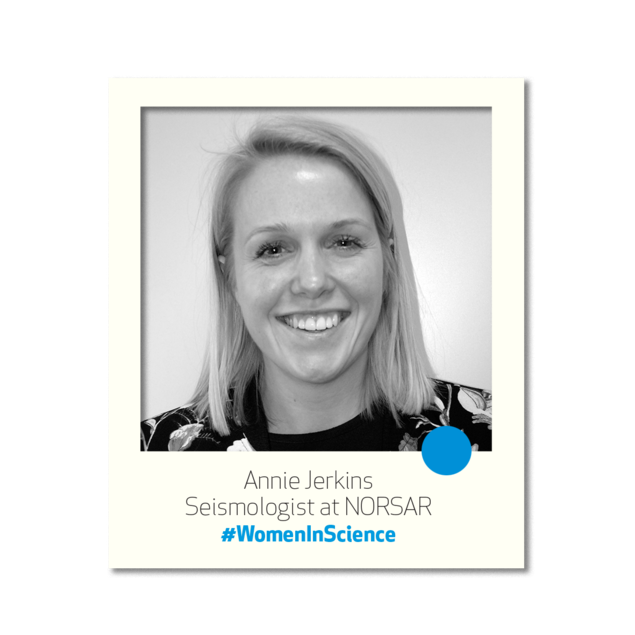#WomenInScience at NORSAR
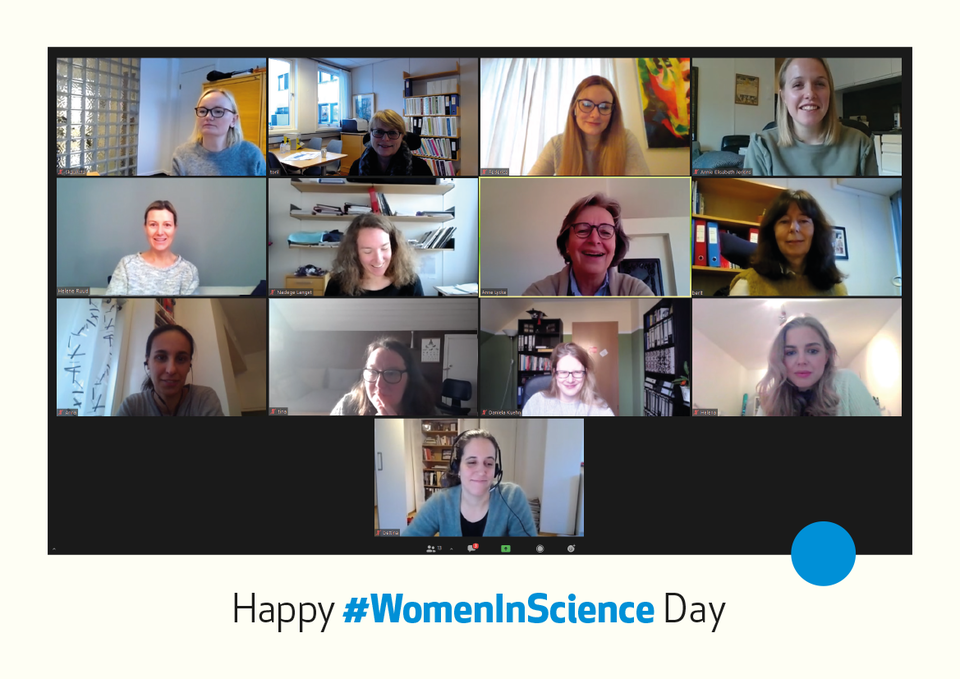
On 11 February, NORSAR celebrated the International Day for Women and Girls in Science: #WomenInScience. Throughout the week we interviewed some of our female colleagues.
Below you will find the interviews gathered:
Anna Maria is Italian and has a master’s degree in Structural Geology and Geodynamic of the Earth and of the Planets and a PhD in Structural Geology from Durham University.
What did you study – and why did you choose this field?
I studied geology. At high school, I was intrigued by minerals and rocks and fascinated about volcanos. When I started university, I quickly realized that I had an interest for the processes that shaped and continue shaping the landscape. Structural geology was a more mature choice and also relevant since I am from a region in Italy that, like many others, has been affected by destructive earthquakes in the recent past. Through field geology I wanted to find signs of these events and try to understand more.
What do you work with at NORSAR?
As part of the applied seismology team at NORSAR, I have been working with different international research projects that use seismicity induced by industrial processes, like CO2 storage, to interpret the subsurface. I also work within the risk and hazard team and we collaborate with municipalities to evaluate the potential hazard of earthquakes happening in Norway.
Do you have any recommendations for women and girls who consider science?
Being a woman should not be an obstacle when entering science, it has not been for me and, in any case, remember that you are not alone! Seek a healthy and safe environment and be supportive to your female colleagues. Obstacles on your path might come, but a strong drive and the friendly environment you built, will allow you to overcome them. And, enjoy it!
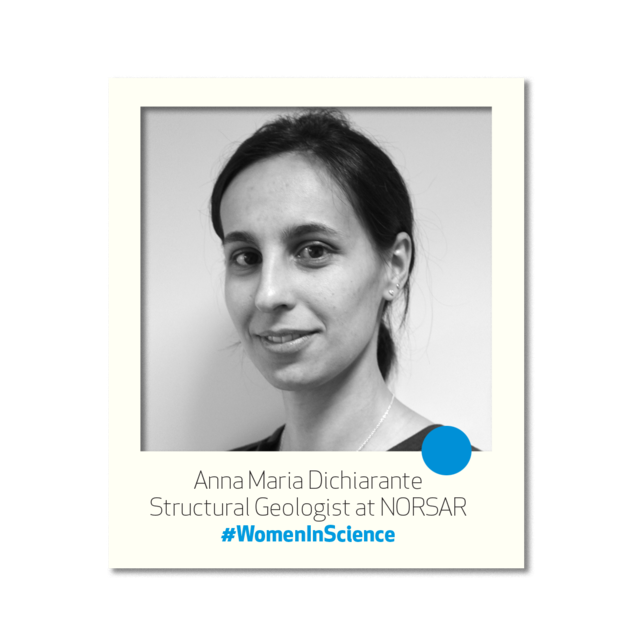
Principal Research Geophysicist and Deputy Head of Department Solutions Tina Kaschwich has been with us for over 15 years and has held various positions.
What did you study – and why did you choose this field?
During my school time it became pretty obvious that my strength lies in physics and mathematics, so when the time came to decide on what future career I will aim for, I got three potential suggestions: architecture, design or geophysics. After some considerations, I decided to study geophysics.
What do you work with at NORSAR?
I started as a Postdoc heired into an ongoing research project at NORSAR. After one year, I was offered a full position as a researcher in the seismic modelling group. Over my 15 years at NORSAR my work profile changed from only research towards administration and project management combined with technical work in various research projects. In 2020 I became deputy of the Software Solutions group.
Do you have any recommendations for women and girls who consider science?
Well, independent on the sex is entering into science a decision that one should think carefully about. It is important to have confidence in your own skills and willing to discuss, defend and try scientific ideas, continuously. If one is self-driven and curious, science is the ideal choice.
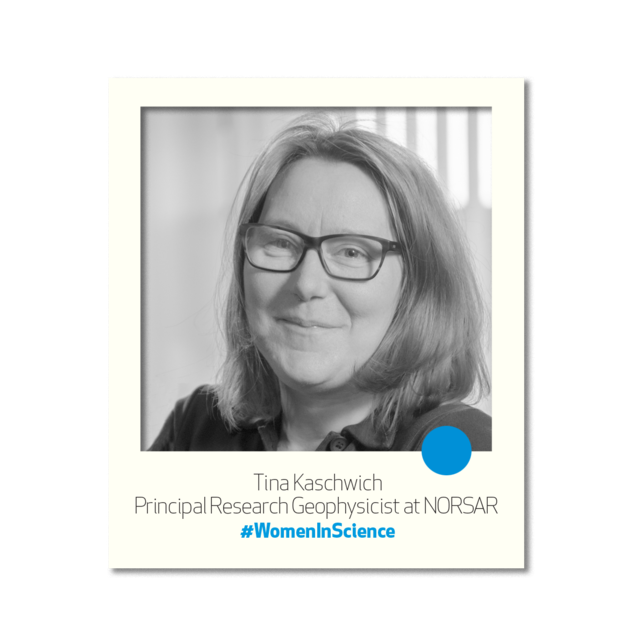
Seismologist Federica Ghione from Italy. Federica holds a master’s degree in Applied Geological Sciences from the University of Pavia and is currently pursuing a PhD in Seismic Risk at the University of Oslo.
What did you study – and why did you choose this field?
I have a master’s degree in Applied Geological Sciences from the University of Pavia, Italy.
I have always been curious and fascinated by the natural sciences since I was a kid. I remember that I had many games related to the topic and I loved to stay in contact to the nature.
When I was in high school and I was studying earth’s science, I started to understand some of these natural processes that amazed me. And by the end of high school, I was certain that I wanted to be a scientist.
So, I had no doubt when I engaged to the geology department to better understand the processes that drive the Earth and build a safer world to help the society.
What do you work with at NORSAR?
I work on seismic hazard and risk. Few months ago, I started the PhD on seismic risk with the University of Oslo and NORSAR. The main objective of my PhD is to perform a seismic risk assessment for the city of Oslo.
I am really happy to work on this field because it has a direct impact to the society. The purpose of this branch of science is to mitigate the impacts of an earthquake, therefore increasing the safety and quality of life of society.
Do you have any recommendations for women and girls who consider science?
My suggestion is to ask yourself always questions about everything and never stop when you don’t receive an answer or you don’t understand something. Try to investigate and never give up.
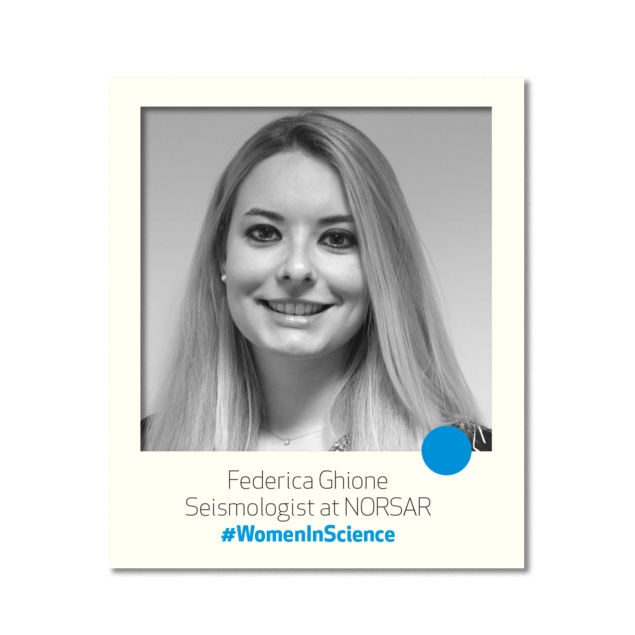
Norwegian-American Seismologist Annie Jerkins in currenty pursing a Ph.D. in Seismology at University of Oslo while working at NORSAR.
What did you study – and why did you choose this field?
I have a master’s degree in Geophysics from the University of Bergen and currently pursue a Ph.D. in Seismology at the University of Oslo.
I chose to study Geophysics and Seismology because I have always had an interest for maths and been intrigued by how this can be applied to real-world problems. When I was a child, I saw a volcano on a vacation to Lanzarote, and since then been fascinated by the earth’s inner powers.
What do you work with at NORSAR?
I work as a Seismologist and, as mentioned, currently pursue a Ph.D in Seismology. The topic of my Ph.D is improved understanding of earthquakes in the North Sea. The understanding of these earthquakes is important for oil and gas endeavours in the area.
In addition, I have been a part of the start-up of the Young Professionals Network (YPN) for the Comprehensive Nuclear-Test-Ban Treaty Organistation (CTBTO). This is an important initiative, and its objective is to provide an adequate venue for young professionals to grow and learn within CTBO’s aims – an organisation undergoing a generational shift.
Do you have any recommendations for women and girls who consider science?
If you are female and interested in science, I think you should go for it!
Women and men have the same preconditions to succeed in science. I also believe a good balance between female and male in work environments makes better dynamics and, thus, better results. There is an increasing number of women in science, and at NORSAR the number of women has increased drastically the past years. This has been fully positive.
